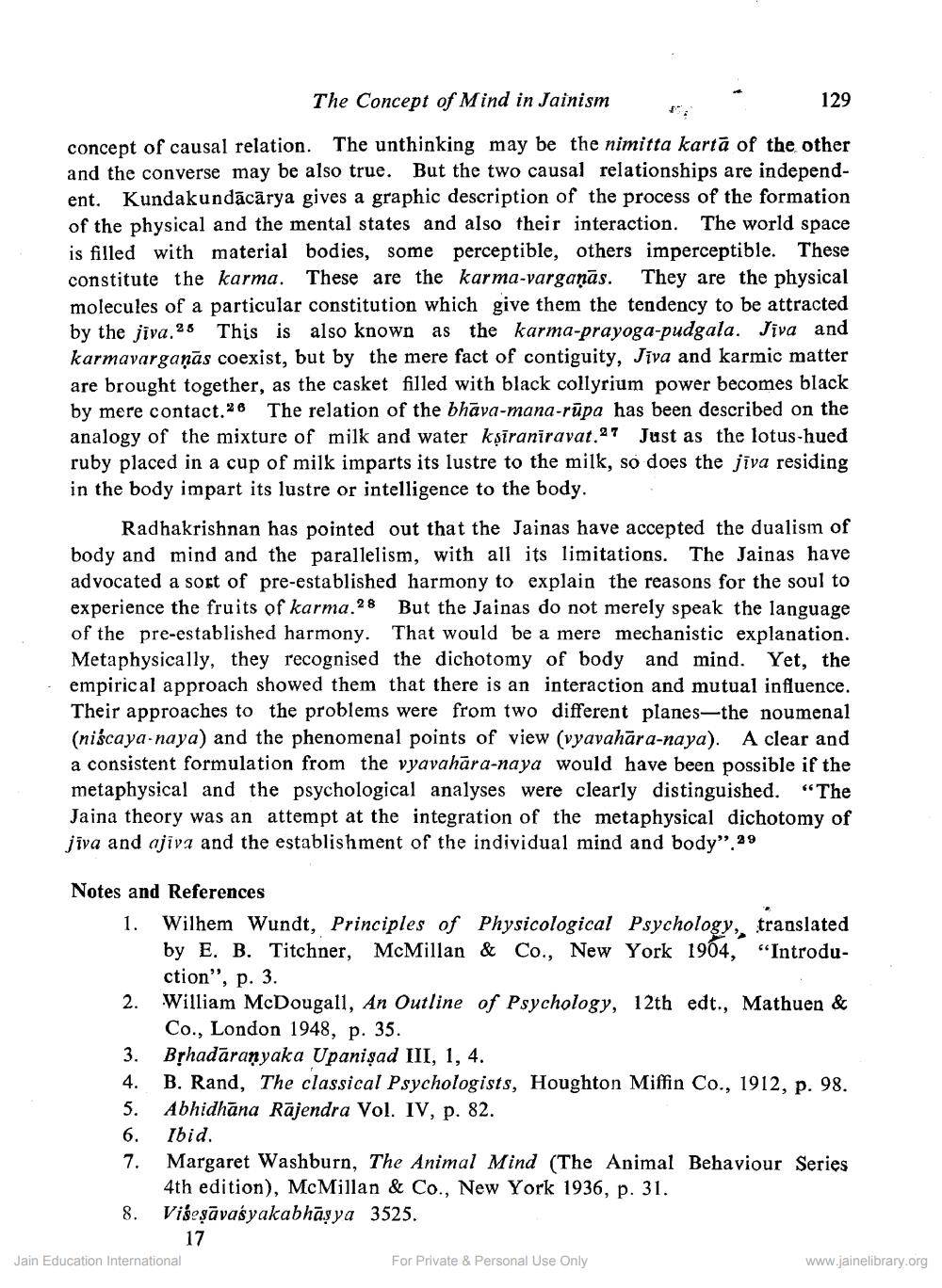Book Title: Concept of Mind in Jainism Author(s): T G Kalghatgi Publisher: Z_Aspect_of_Jainology_Part_3_Pundit_Dalsukh_Malvaniya_012017.pdf View full book textPage 5
________________ The Concept of Mind in Jainism 129 concept of causal relation. The unthinking may be the nimitta kartā of the other and the converse may be also true. But the two causal relationships are independent. Kundakundācārya gives a graphic description of the process of the formation of the physical and the mental states and also their interaction. The world space is filled with material bodies, some perceptible, others imperceptible. These constitute the karma. These are the karma-vargaņās. They are the physical molecules of a particular constitution which give them the tendency to be attracted by the jiva. 26 This is also known as the karma-prayoga-pudgala. Jiva and karmavargaņās coexist, but by the mere fact of contiguity, Jiva and karmic matter are brought together, as the casket filled with black collyrium power becomes black by mere contact.26 The relation of the bhāva-mana-rūpa has been described on the analogy of the mixture of milk and water kşīraniravat.27 Just as the lotus-hued ruby placed in a cup of milk imparts its lustre to the milk, so does the jīva residing in the body impart its lustre or intelligence to the body. Radhakrishnan has pointed out that the Jainas have accepted the dualism of body and mind and the parallelism, with all its limitations. The Jainas have advocated a sort of pre-established harmony to explain the reasons for the soul to experience the fruits of karma.28 But the Jainas do not merely speak the language of the pre-established harmony. That would be a mere mechanistic explanation. Metaphysically, they recognised the dichotomy of body and mind. Yet, the empirical approach showed them that there is an interaction and mutual influence. Their approaches to the problems were from two different planes—the noumenal (niscaya-naya) and the phenomenal points of view (vyavahāra-naya). A clear and a consistent formulation from the vyavahāra-naya would have been possible if the metaphysical and the psychological analyses were clearly distinguished. “The Jaina theory was an attempt at the integration of the metaphysical dichotomy of jiva and ajiva and the establishment of the individual mind and body" 29 Notes and References 1. Wilhem Wundt, Principles of Physicological Psychology, translated by E. B. Titchner, McMillan & Co., New York 1904, "Introdu ction”, p. 3. 2. William McDougall, An Outline of Psychology, 12th edt., Mathuen & Co., London 1948, p. 35. 3. Brhadaranyaka Upanişad III, 1, 4. 4. B. Rand, The classical Psychologists, Houghton Miffin Co., 1912, p. 98. 5. Abhidhāna Rājendra Vol. IV, p. 82. Ibid. 7. Margaret Washburn, The Animal Mind (The Animal Behaviour Series 4th edition), McMillan & Co., New York 1936, p. 31. 8. Viseşāvasyakabhāsya 3525. 17 Jain Education International For Private & Personal Use Only www.jainelibrary.orgPage Navigation
1 ... 3 4 5 6
